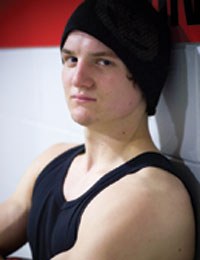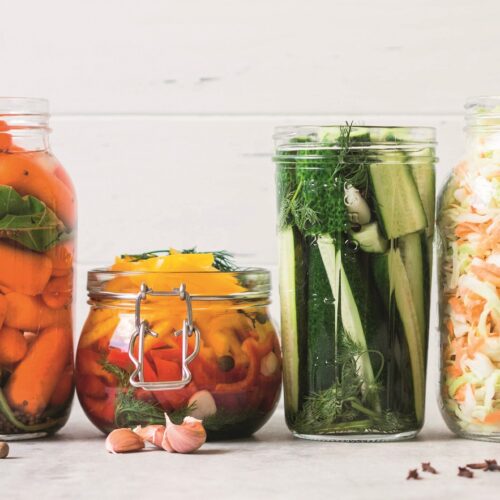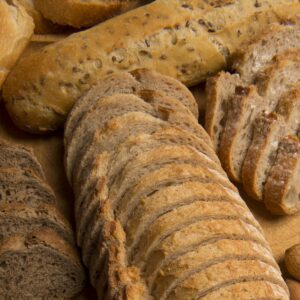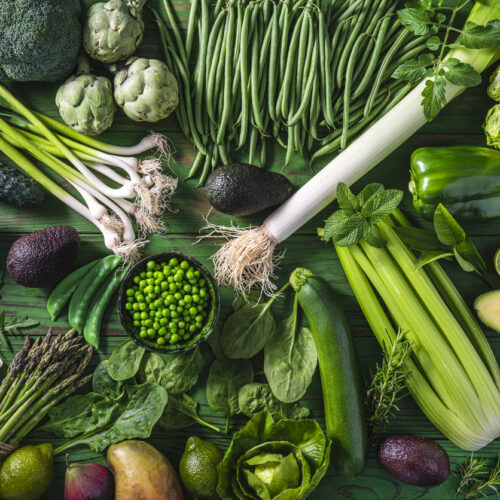
Our nutrition and exercise expert looks at Ray’s eating and exercise habits and gives him some advice.
Subject
Ray is a 17-year-old boxer. He is currently moving up in the national ranks. He lives with his family and works hard between boxing and his physically demanding job.
- Age: 17 years
- Height: 1.67m
- Weight: 67kg (competes in <64kg division)
- BMI: 24 (healthy weight range)
Ray’s goals
- Weight loss for weight division
- Improve nutrition for sport and performance
At 17 Ray is very well respected in boxing circuits for his fitness and stamina in the ring. He trains very hard but having never worked with a nutritionist before he and his coach feel that he needs to show some discipline with his eating habits as well! His long-term goal is two fights in October representing New Zealand in Scotland.
Ray’s current eating habits
- Breakfast: Small bowl of muesli with light blue milk approximately once a week. The rest of the time a protein shake and 2 pieces of toast with Vegemite and butter.
- Morning tea: Coffee with sugar and pie or small snack that is usually high in sugar or fat, eg buns, chips.
- Lunch: Pie 3-4 times per week or chicken roll. Sometimes lunches are skipped and eaten later in the day. Coffee.
- When he gets home: Protein shake and toast.
- Dinner: Normally about 400g of meat and 2 cups of pasta or rice. Not usually many vegetables. Sometimes a takeaway or pizza, or a protein shake instead of dinner.
- Dessert: 2 scoops of ice cream most nights.
Ray doesn’t eat much fruit except for a banana most days around training or for a snack. He doesn’t eat many vegetables except for those in his chicken rolls and what is sometimes on his plate. He doesn’t have any milk during the day. He has water with his protein shakes. He has cheese a few times a week. His meals are quite haphazard: at varying times they may be missed and made up for later. Most days to help get him through the day he will have 2 sugar-free energy drinks and he will have the occasional sports drink with training. He has red meat for the majority of the week and chicken a few times a week. He doesn’t really eat fish. Ray sometimes forgets to have much water and only has small amounts with training.
Ray’s current exercise regime
Ray works with his coach on an extensive programme involving 2 sessions per day. The majority is largely cardiovascular based (eg long runs). A lot of the strength work is specific to the training and competing, so less work with machines and more dynamic training. He is training and fighting well but does get fatigued on occasion. A complete skinfold body fat assessment confirms Ray is quite lean, at approximately 6.4% body fat. This suggests it is unlikely Ray will be able to (at least safely) get to the 64kg class without losing some body muscle.
Ray’s medical assessment
Ray has youth on his side so presents quite the picture of health. He has been relatively injury-free in his boxing and training career. However, one measurement surprised both Ray and his coach: that is a slightly high total cholesterol reading at 5.2mmol/L (ref <4mmol/L). But it is important to note he does have a high HDL reading bringing this up and his ratio between the good and the bad cholesterol is in range. We see this as a warning that he needs to be careful with his intake or this could become worse over time or as he becomes more sedentary (which could lead to a dropping of his protective HDL cholesterol).
Expert assessment
Kristen MacKenzie, health and nutrition consultant at Millennium Institute of Sport & Health, comments:
I don’t think it takes a sport nutritionist to pick up some key points of change for Ray. Some inventiveness is needed to find strategies that fit in with Ray’s lifestyle and over time improving his current practices and capabilities.
Ray is used to putting his body through very tough times and he is what you would call ‘mentally tough’. But this can only get you so far when you are pushing your body so hard and not fuelling or hydrating it adequately. A large proportion of Ray’s energy intake is coming from the protein shakes.
This is probably the main reason he is not losing weight on his current dietary intake but this is not the optimum fuel for his body. He is having a disorganised intake largely based around convenience; mostly high-fat or high-sugar products. He is not organising his eating to complement and assist his training sessions, apart from following some sessions with a protein shake.
He constantly needs to pick himself up with caffeine through coffees and energy drinks each day. Caffeine may be claimed to enhance sports performance but only when used effectively and in a structured manner. In this case, it is not helping Ray’s cause.
My other big concerns are a lack of vitamin and mineral intake through vegetables and fruit – not to mention the other important components such as antioxidants (which are important to scavenge free radicals formed in exercise). Due to his low fruit, whole grain and grain intake I am concerned about his fibre intake. His lack of high-fibre foods and low glycaemic index foods in general is possibly resulting in his blood sugar levels being all over the place. This could be part of the reason he needs constant caffeine pick-me-ups!
Exercise-wise, Ray’s programme is provided by his coach who has a long history in boxing circuits. My role is supporting this exercise programme by providing appropriate nutrition around the sessions and body physique assessments. We are very happy with his VO2 max results. Ray is currently in a phase of his programme where this should be at its peak and now he is moving into the phase where he needs to maintain the muscle mass but lose some body fat.
Recommendations
Food
A re-vamped breakfast: Ideally it should be based around a carbohydrate food such as toast or cereal, moderate protein, and contain some fruit. He gets a few options including porridge, milk and dried fruit, or a piece of fruit and/or fruit juice, grainy toast and yoghurt. He is given an idea of portion sizes and protein requirements in this meal.
Suitable snacks: Snacks recommended include creamed rice, fruit, milk drinks or dairy snacks (two or more dairy foods must be included per day), buns, small sandwiches, muesli bars (especially ones containing nuts for the good fat content) crackers and Vegemite. These are timed around Ray’s trainings so he has low-GI foods leading up to training, and for longer and heavier sessions some moderate/high-GI food with some protein for recovery.
Suitable lunch every day: This can include both healthy takeaways and options he can bring from home. For lunch Ray and his coach decide most days he wants to bring his own. He chooses tuna and cottage cheese and rolls containing vegetables, or rice and meat with vegetables. He is advised to visit the local shop if he does not bring his lunch from home, to buy meat and vegetable filled rolls and a dairy drink. He is always to include some protein, carbohydrate and vegetables. Fruit or dairy snacks are also a good inclusion. He is advised that he must always have regular meals and never skip lunch.
Dinner can still fit in with the family: However, there is emphasis on the appropriate protein serve (approx 200g). He is always to include a minimum of 2 cups of vegetables or salad (fresh or frozen) and carbohydrate sources such as kumara, potato, rice, noodles and pasta. He is advised of some healthy takeaway options or a recovery dinner based around his protein shake, fruit and dairy products if he really feels he cannot stomach a large meal.
Addressing his fat intake: In all of these changes we aim to lower the saturated fat content of his diet; although he has some room for unsaturated fats and oils, we do aim for a low-fat diet overall. This will help some weight loss as he is looking to lose weight to become more safely within his weight category. This is another reason we minimise his protein shakes to smaller serves around training and focus on getting appropriate amounts of protein and carbohydrate over the day.
Exercise
Ray’s training is based around maintaining the cardiovascular base he has achieved, and also his current muscle mass. He is looking to lose some body fat (and possibly some body muscle, but we want to minimise this) to reach his weight class. Most days this includes two sessions, including ongoing skills training for boxing.
Ray’s reaction
After 2 weeks
“My coach and I knew I needed to make changes and I have started to get into the new pattern and am feeling pretty good. Most of the foods I am happy with and was having sometimes anyway. It is more making sure I have them there to eat every day. The biggest change apart from bringing all my lunch and snacks has been the vegetable and fruit intake. As long as they are on my plate I’ll eat them; the hardest part was getting them there in the first place. It’s good to know I am having good food choices around my training.”
6 weeks later
Ray has done an amazing job and his coach is very happy with his progress in training and his discipline overall. The benefits of the new eating regime include heightened energy levels.
Ray and his coach changed his goals considerably during the six weeks. Now we have a weight gain goal instead of a weight loss goal! They have decided to shift him up to the 69kg class. This decision is based on some important discussions including the negative affect energy restriction might have on his long-term performance, muscle mass and overall growth. This meant we had to change our recommendations and meal plan.
Although he had been building up to a fight towards the end of the six weeks, it was cancelled. He is now looking towards the New Zealand nationals and a trip to Scotland for two fights representing New Zealand. At the end of six weeks he weighs in at 67kg – exactly where he started. This is because although his weight had dropped initially, for the last few weeks we have been aiming to build him up to the 69kg class. It is important that this weight gain is largely from building muscle mass so more strength elements are being built into his programme and we have increased his protein and carbohydrate intake.
His cholesterol results are now in range. This is not surprising, as his fat intake has dropped by about one third and his saturated fat intake has dropped (this contributes to the bad cholesterol). He has also started to take flaxseed oil. This oil contributes the good unsaturated fats omega-3 and omega-6. He is eating more tuna in sandwiches – another source of these oils.
Although his fat intake has dropped, overall his energy intake is higher based on having more carbohydrate and protein throughout the day. His fibre intake has increased by 5g per day – a good start. His vitamin and mineral intake has increased through fruit and vegetables. He still has a moderate caffeine intake but this has been lowered to a maximum of 3 serves per day.
Ray reports that he is quite comfortable with his current eating regime and has developed some very good habits. He has generally stuck to the meal plan given to him. He is now meeting his dairy and calcium requirements daily. He no longer eats many takeaways or pies. His coach is very pleased and is continually seeing improvements in Ray and feels they can now put ‘ticks’ in all the main boxes, including nutrition!
A few months on…
www.healthyfood.com










